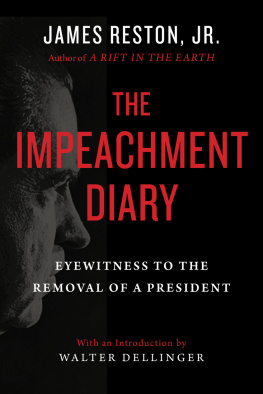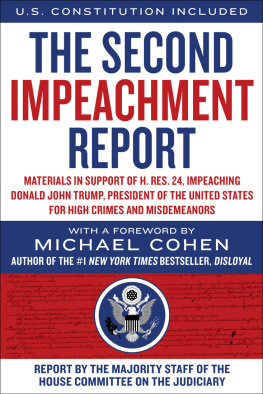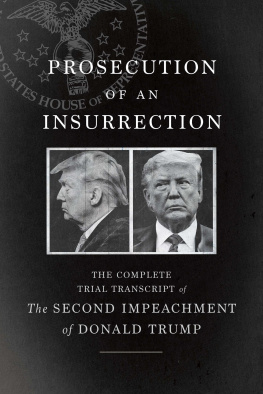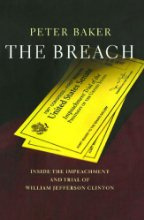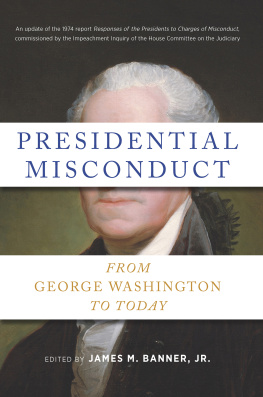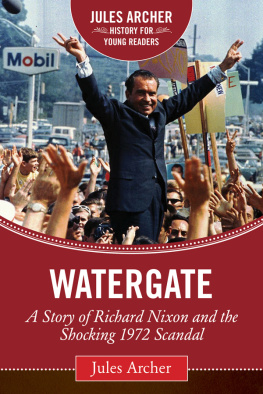
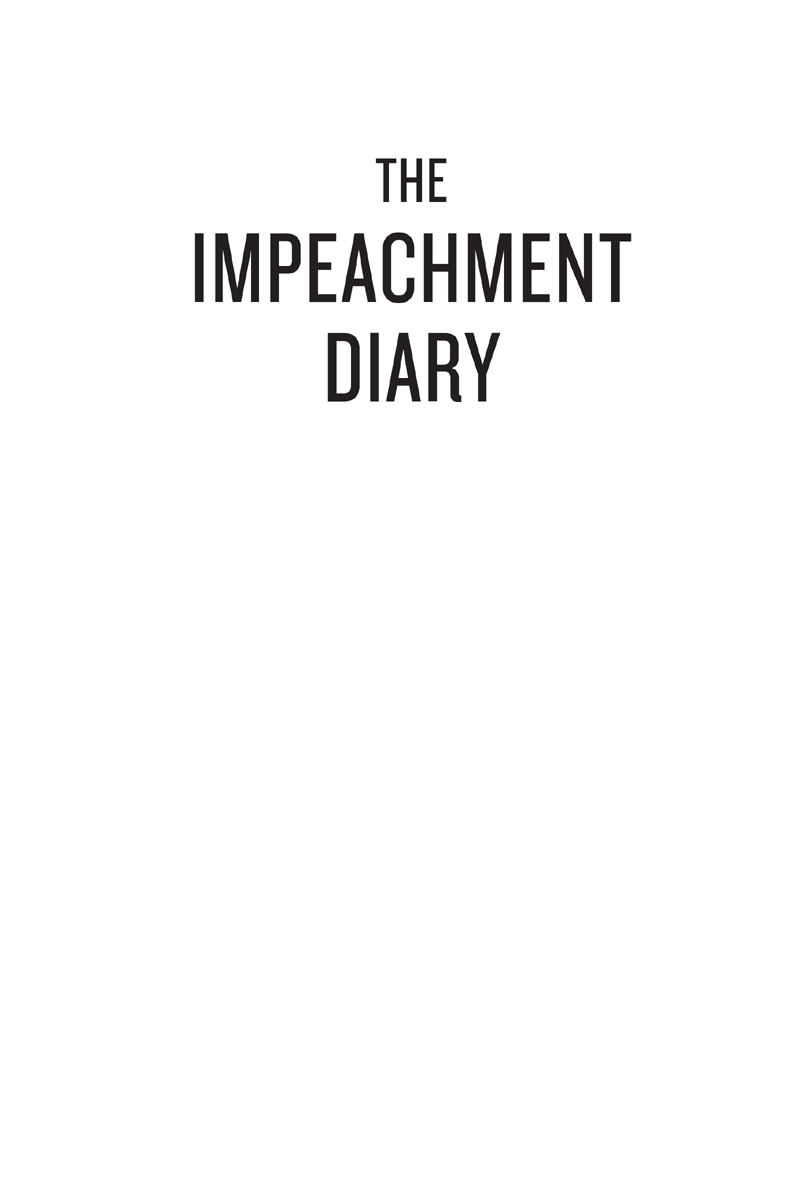
Also by James Reston, Jr.
To Defend, To Destroy: A Novel , 1971
The Amnesty of John David Herndon , 1973
The Knock at Midnight: A Novel , 1975
The Innocence of Joan Little: A Southern Mystery , 1977
Our Father Who Art in Hell: The Life and Death of Jim Jones , 1981
Shermans March and Vietnam , 1987
The Lone Star: The Life of John Connally , 1989
Collision at Home Plate: The Lives of Pete Rose and Bart Giamatti , 1991
Galileo: A Life , 1994
The Last Apocalypse: Europe at the Year 1000 A.D ., 1998
Warriors of God: Richard the Lionheart and Saladin in the Third Crusade , 2001
Dogs of God: Columbus, the Inquisition, and the Defeat of the Moors , 2005
Fragile Innocence: A Fathers Memoir of His Daughters Courageous Journey , 2006
The Conviction of Richard Nixon: The Untold Story of the Frost/Nixon Interviews , 2007
Defenders of the Faith: Christianity and Islam Battle for the Soul of Europe , 2009
The Accidental Victim: JFK, Lee Harvey Oswald, and the Real Target in Dallas , 2013
Luthers Fortress: Martin Luther and His Reformation Under Siege , 2015
A Rift in the Earth: Art, Memory, and the Fight for a Vietnam War Memorial , 2018
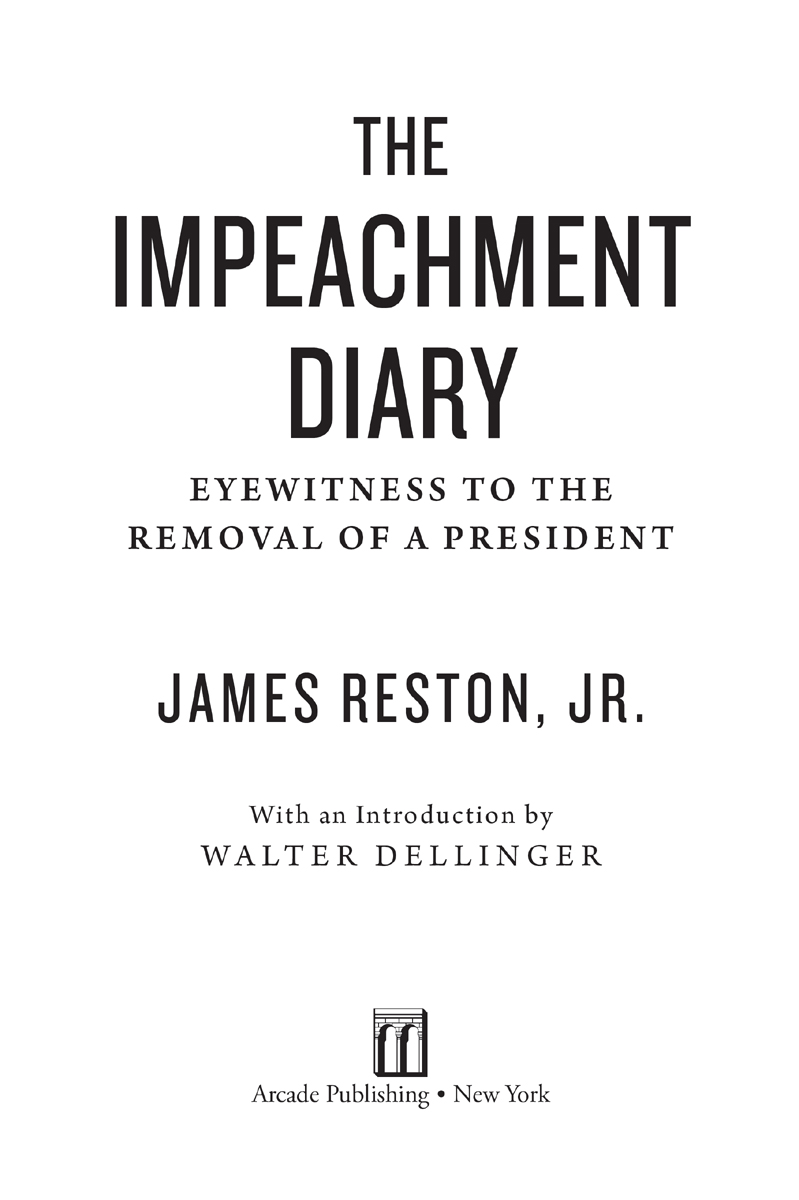
Copyright 2019 by James Reston, Jr.
Introduction copyright 2019 by Walter Dellinger
All rights reserved. No part of this book may be reproduced in any manner without the express written consent of the publisher, except in the case of brief excerpts in critical reviews or articles. All inquiries should be addressed to Arcade Publishing, 307 West 36th Street, 11th Floor, New York, NY 10018.
First Edition
Arcade Publishing books may be purchased in bulk at special discounts for sales promotion, corporate gifts, fund-raising, or educational purposes. Special editions can also be created to specifications. For details, contact the Special Sales Department, Arcade Publishing, 307 West 36th Street, 11th Floor, New York, NY 10018 or .
Arcade Publishing is a registered trademark of Skyhorse Publishing, Inc., a Delaware corporation.
Visit our website at www.arcadepub.com.
Visit the authors site at www.restonbooks.com.
10 9 8 7 6 5 4 3 2 1
Library of Congress Cataloging-in-Publication Data is available on file.
Library of Congress Control Number: 2019944455
Cover design by Brian Peterson
Cover photo: Getty Images
ISBN: 978-1-950691-18-0
Ebook ISBN: 978-1-950691-19-7
Printed in the United States of America
For Henry Mayer and Myron Simmons
In Memoriam
Contents
Preface
WITH THE FIRING OF FBI DIRECTOR James Comey in May 2017, just as with the firing of Special Prosecutor Archibald Cox in October 1973 in the so-called Saturday Night Massacre, the talk of impeaching the president of the United States became serious and widespread in America. Impeachment, that grand constitutional inquest of the nation against the nations leader, has been a subject of long and intense interest to me ever since the 1970s, when I was deeply involved with addressing the misdeeds of Richard Nixon, first as an observer of the famous Senate Select Committee on Presidential Campaign Activities in the summer of 1973, when the White House tapes were revealed, then as a witness to the final six weeks of the Nixon presidency in the summer of 1974, and finally, as David Frosts Watergate adviser for the renowned Nixon Interviews in 1977.
Thirty years later, my account of those historic interviews, titled The Conviction of Richard Nixon , was to form the basis for the award-winning play and movie Frost/Nixon . The interviews were historic because they forced Nixon, three years after he was driven from office, to acknowledge his criminality and apologize to the nation, and partly because, with an audience of an estimated 47 million viewers, the series remains the most watched public affairs program in the history of American television.
As talk of Donald Trumps obstruction of justice, abuse of power, and defiance of subpoenas grew louder after Comeys firing, with the cascading scandals and crises of the Trump White House, and with the appointment of the new special counsel, Robert Swan Mueller III, I experienced an unexpected sense of dj vu. Was the country really headed for another formal impeachment proceeding? If we were going down that road, what were the chances of success, if by success was meant the removal of a president from office? And did the countryand its politiciansappreciate the high hurdles that would have to be surmounted before either removal or a presidential resignation could happen?
It is the Nixon experience, not the flawed and discredited effort to remove President Bill Clinton in 1998, that is the template for a process against Donald Trump. Richard Nixon remains the only president in American history who was ever driven from office for high crimes and misdemeanors, crimes that were committed in the sacred space of the Oval Office itself. To know and understand how events unfolded in 19731974 is imperative for anyone who wishes to judge the viability of any serious impeachment effort against Trump. Those long-ago events are the measuring stick for the impeachment politics of today.
The formal process against Nixon began on February 6, 1974, when the full US House of Representatives passed a resolution by a vote of 410 to 4 to authorize the House Judiciary Committee to investigate impeachment charges against the president. In four full months of research and investigation, the Judiciary Committee considered 650 statements of information and more than 7,200 pages of evidence and interviewed nine witnesses. In June of that year, the committee began its first public hearings. Three impeachment articles eventually passed the committee, with a handful of Republican committee members voting for them and against their partys president. In the US Supreme Court, Nixon would lose in his effort to assert executive privilege and withhold incriminating tape recordings from Congress. The vote against him was unanimous, 80. Only with the revelation of the so-called smoking gun tape, definitively revealing Nixons abuse of power, and the defection of many Republicans from his cause, was his fate sealed.
It could have gone differently. Despite overwhelming evidence of the presidents wrongdoing, Republicans might have stuck with their man without defection, as they did during the summer of 2019 in the preliminary stage of a possible proceeding against Donald Trump. The vote in the Supreme Court might have been less than unanimous, encouraging Nixon to fight on. A vote in a Senate trial of the president, if it came to that, might have fallen short of the two-thirds supermajority that is required under the Constitution for conviction and removal, as it did fall short in both the impeachment trial of Andrew Johnson in 1868 and of Bill Clinton in 1998. Of course, Nixon resigned after the smoking gun tape was revealed, before the full House of Representatives could formally impeach him and send his case to the Senate for trial. But out of sheer spite, he could have remained in office and dared the Congress and the country to suffer through a six-month impeachment trial in the Senate, as his daughter Julie was urging. In addressing the parallel between the Nixon case and his own on June 10, 2019, President Trump cited one critical difference. He left. I dont leave.
Next page
